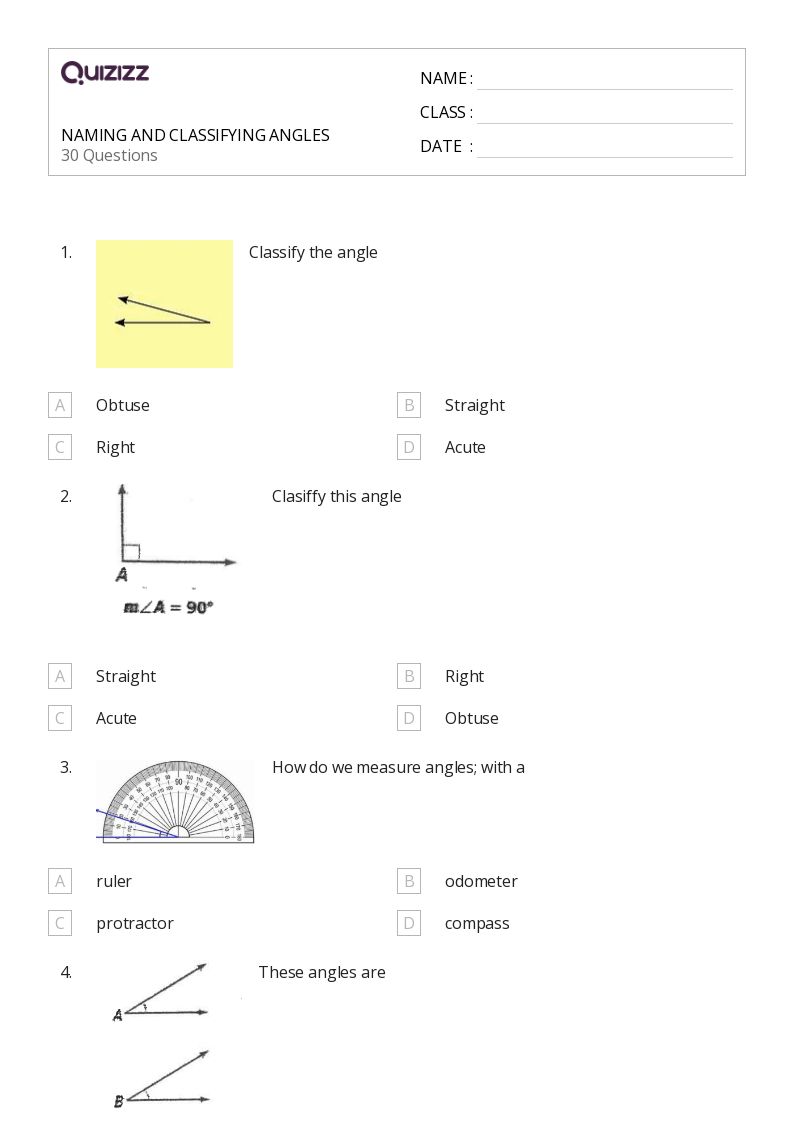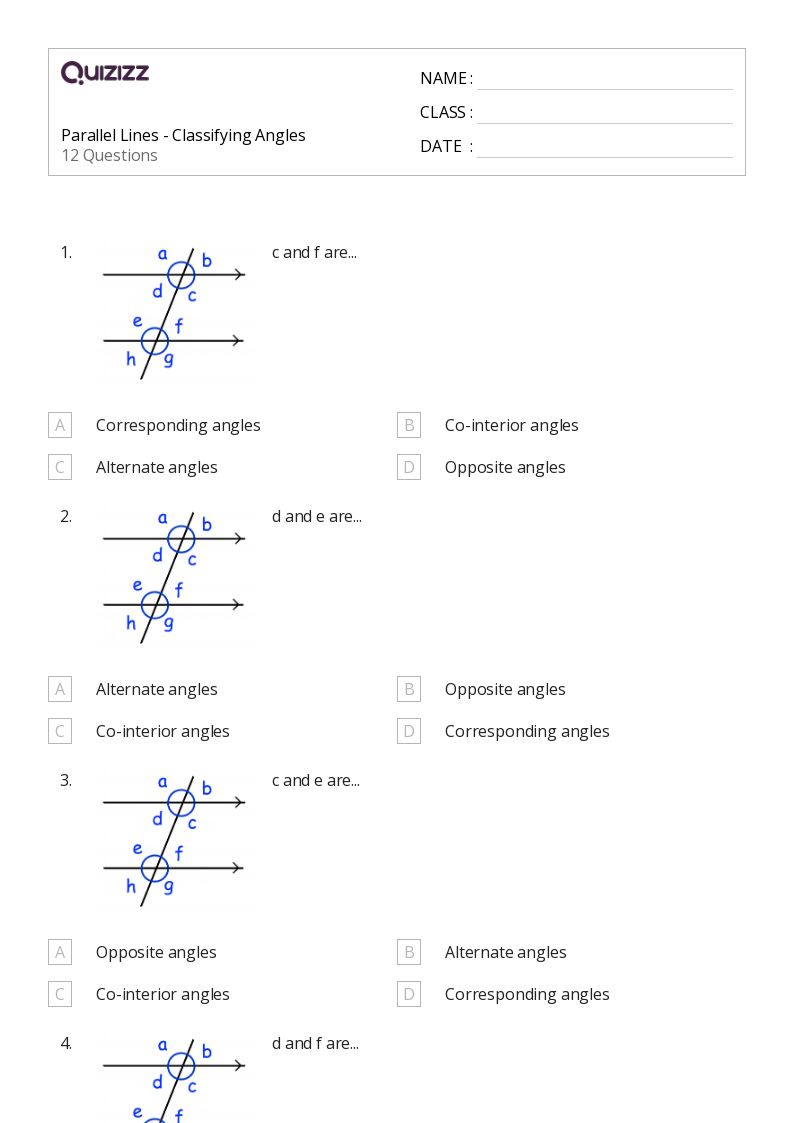
20 Q
8th - 11th

30 Q
8th

25 Q
7th - 8th

11 Q
8th

12 Q
5th - 8th

5 Q
8th

12 Q
8th - 10th

18 Q
8th

16 Q
8th

22 Q
6th - 8th

13 Q
8th - 10th

25 Q
8th - 10th

13 Q
8th - 10th

16 Q
8th - 10th

40 Q
8th

27 Q
8th

14 Q
7th - 8th

22 Q
8th - 10th

32 Q
6th - 8th

20 Q
8th

58 Q
7th - 8th

30 Q
6th - 8th

7 Q
8th
Explore Classifying Angles Worksheets by Grades
Explore Other Subject Worksheets for grade 8
Explore printable Classifying Angles worksheets for 8th Grade
Classifying Angles worksheets for Grade 8 are essential tools for teachers to help their students master the concepts of Math and Geometry, specifically focusing on angles. These worksheets provide a variety of exercises that challenge students to identify, measure, and classify different types of angles, such as acute, obtuse, right, and straight angles. By incorporating these engaging and interactive worksheets into their lesson plans, teachers can effectively reinforce the fundamental principles of Geometry, while also catering to different learning styles. As students progress through the Grade 8 curriculum, they will develop a strong foundation in understanding angles and their properties, which is crucial for success in higher-level Math courses. Classifying Angles worksheets for Grade 8 are a valuable resource for teachers looking to enhance their students' learning experience and overall performance in Geometry.
Quizizz is an innovative platform that offers a wide range of educational resources, including Classifying Angles worksheets for Grade 8, to support teachers in delivering engaging and effective lessons. With Quizizz, teachers can create customized quizzes and games that align with their curriculum, allowing students to practice and apply their knowledge of Math and Geometry concepts, such as angles. In addition to worksheets, Quizizz offers various interactive features, such as real-time feedback and leaderboards, which motivate students to actively participate and improve their understanding of the subject matter. By integrating Quizizz into their teaching strategies, educators can provide a dynamic and interactive learning environment that not only enhances students' comprehension of angles and Geometry but also fosters a love for learning and academic success.
